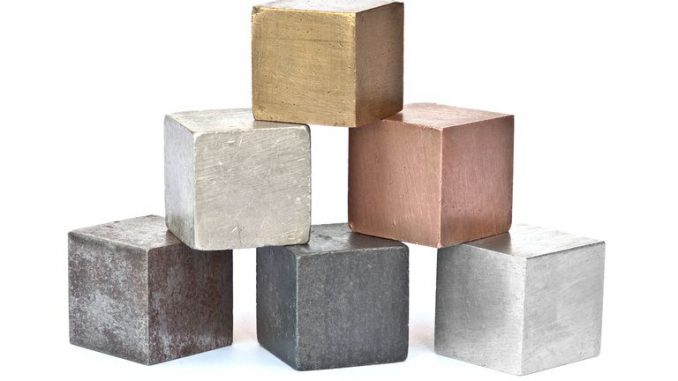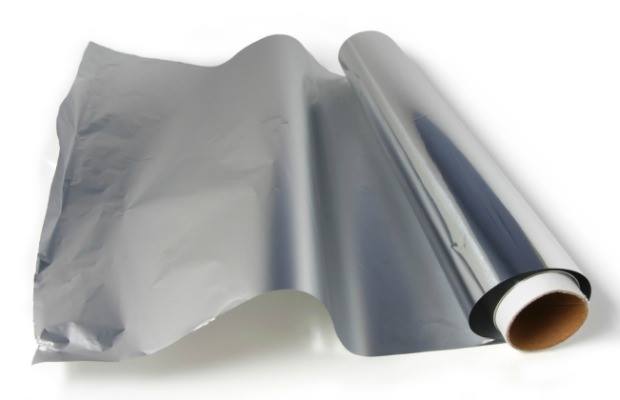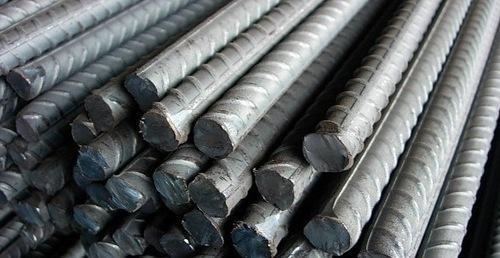
- Metals form an important class of elements. They are widely used in our daily life for a large number of purposes. They are the elements which normally conduct heat and electricity, and are malleable and ductile. Metals are also lustrous (shiny), hard, strong, heavy and sonorous (making sound when struck). Aluminium, Copper, Silver, Zinc, Lead, Mercury etc. are some examples of metals.
Aluminium:
- Symbol :- Al
- Atomic number :- 13
- Atomic weight :- 27 amu
- Valency :- 3
- Position in the periodic table :- group IIIA ( p-block element)
- It is the most widely distributed element (7.3% in the Earth’s crust).
- It is a reactive metal and occurs in a combined state in the form of ores.
Ores:
- Bauxite :- Al2O3.2H2O
- Felspar :- KAlSiO3.O8
- Cryolite :- Na3AlF6
- Among these, bauxite is the principal ore of Aluminium.
Physical properties:
- It is a silvery white metal.
- Its density is 2.7gm/cm3.
- It is both malleable and ductile.
- It is a good conductor of heat and electricity.
- Its boiling point is 1800oC and melting point is 660oC.
Uses:
- It is used for making transmission cables and for winding the moving coils of dynamos and motors as it is a good conductor of electricity.
- It is used for making household utensils.
- It is used in the manufacture of paints chiefly used for painting electric and telegraph poles.
- It is used in the form of foil for wrapping food stuffs, medicines, in capping milk bottles and in making container for tooth paste.
- Being an excellent reflector of light, it is used for making mirrors for reflecting telescopes.
- It is used in making light alloys which are widely used in making the bodies of trains, buses, cars and aeroplanes.

* An alloy is a homogenous mixture of two or more metals or metal and a non-metal and having metallic property. Alloying aluminium with small quantities of other metals greatly increases its strength without increasing its weight. Some common alloys of Aluminium are Magnalum (Al: Mg) and Duralumin (Al: Cu: Mg: Mn).
Iron:
- Symbol :- Fe
- Atomic number :- 26
- Atomic weight :- 36 amu
- Valency :- 2 or 3
- Position in the periodic table :- group IIA (d-block element)
- It is the second most abundant metal in the Earth’s crust.
Ores:
- Haematite :- Fe2O3
- Magnetite :- Fe3O4
- Limonite :- 2Fe2O3.3H2O
- Siderite :- FeCO3
- Iron pyrite :- FeS2
- Haematite is the most common ore of iron.
Physical properties:
- Pure iron is shiny grey color metal.
- It is highly malleable and ductile.
- It is good conductor of heat and electricity.
- It has a density of 7.86gm/cm3.
- Its melting point is 1500oC and boiling point is 2500o
- It loses its magnetic property on heating to about 770o
Uses:
- It is used in making household utensils and equipments.
- It is used for casting pipes, radiators, stoves, automobile engine blocks, railway lines etc.
- It is used in manufacture of steel.
- It is used in the construction purposes e.g. in the reinforcement of roofs and other parts of buildings, bridges etc.
- It is used as a catalyst in various chemical reactions (e.g. in the preparation of Ammonia gas by Haber’s process).

Copper:
- Symbol :- Cu
- Atomic number :- 29
- Atomic weight :- 63.57 amu
- Valency :- 1 or 2
- Position in the periodic table :- group IB (d- block element)
Ores:
- Copper pyrite (chalcopyrite) :- CuFeS2
- Copper glance (chalcocite) :- Cu2S
- Cuprite :- Cu2O
- Malachite :- CuCO3.Cu(OH)2
- Chalcopyrite is the most common ore of copper.
Physical properties:
- It is reddish brown in color and is a heavy metal.
- It is malleable and ductile.
- It is an excellent conductor of heat and electricity.
- It melts at 1083oC and boils at 2350o
- It has a density of 8.95gm/cm3.
Uses:
- It is used in making electric wires, electric motor, dynamos and several other electrical appliances.
- As it conducts heat properly, it is used making household (cooking) utensils.
- It is used in copper plating and electroplating.
- It is used in making coins for currency purpose.
- It is used in the manufacture of various chemicals and insecticides.
- It is used in making steam pipes, vacuum pans, calorimeters, condenser tubes, automobile radiators etc.
- It is used in making alloys with other metals. E.g. bronze (Cu: Sn: Zn), brass (Cu: Zn) etc.
